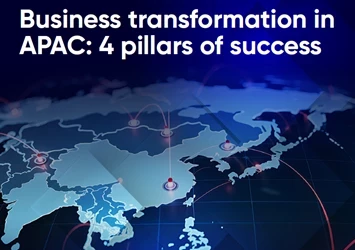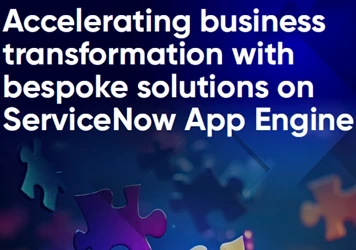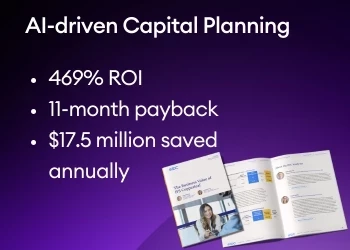Inside Pritzker Private Capital value-driven approach to digital transformation
How Pritzker Private Capital helps middle-market companies leverage digital technology tin increase efficiency, growth and agility
Add bookmark
Companies of all sizes face barriers to implementing digital strategies, such as budget limitations, knowledge gaps and lacking IT infrastructure; however, for middle-market companies these challenges can seem especially daunting. At family investment firm Pritzker Private Capital (PPC), its family of middle-market companies is embracing digital transformation to drive growth, cost-effectiveness and organizational agility.
To learn more about how the firm partners with its family of companies to help them achieve operational excellence, we sat down with Anish Sharan, Head of Digital Transformation at Pritzker Private Capital at OPEX Week.
them achieve operational excellence, we sat down with Anish Sharan, Head of Digital Transformation at Pritzker Private Capital at OPEX Week.
Having honed his lean six sigma skillsets at the Chicago Mercantile Exchange, The Nielsen Company, Leo Burnett Worldwide, Motorola and Toyota, Anish knows what it takes to successfully spearhead operational excellence and change management initiatives. As he explains below, digital transformation starts and ends with mindsets.
PEX Network: Do you have any recent digital transformation wins you can share with us?
Anish Sharan: PPC’s flexible capital base allows us to invest in companies for a longer term than traditional private equity firms, and we believe this focus on investing for the right duration benefits our companies. We work closely with our family of companies over many years to help them increase efficiency, improve customer experience and boost profitability. One major focus this year is digital technology and how it can be used to drive growth.
I recently collaborated with a CFO of a manufacturing and distribution company to transform the organization’s back office processes. When we first started, the finance department was mired in manual processes and some people spent most of their day entering data by hand.
Together we analyzed, streamlined and automated multiple finance processes. The results blew everyone away. By automating the accounts receivable process, for example, we doubled the response rate and reduced overhead costs. We also freed up 12 full time workers to focus on more strategic, high value endeavors.
The success of this project helped build enthusiasm across the organization. Employees across the company have become big believers in the value of process improvement and digital transformation.
PEX Network: What is the biggest challenge you have faced so far and how did you overcome it?
AN: The CEOs and business leaders I work with already have full time jobs. If I am going add to their day-to-day work, it has to be worth it. Prioritizing projects that will deliver high value and effectively communicating those benefits can be challenging, but are paramount to securing buy-in.
Transformations are not technology driven. They should be centered around people and businesses objectives. Solving business problems and building growth mindsets are prerequisites for success.
PEX Network: What are your go-to strategies for driving digital transformation and operational excellence?
AN: Continuous improvement and operational excellence come before digital transformation. Start by leveraging lean six sigma methodologies to define and optimize the process, then identify the right tool to automate it. This approach will ensure you do not digitally enable bad processes.
Transformation is a change initiative, not a technology project. You have to change the way people think to be successful.
Three simple steps work best for me: think big, lay out a vision that aligns with the ambitions of the C-suite and start small. Your vision for change must be value-driven and linked to business objectives such as increased growth, efficiency, productivity and employee experience.
Then, when it comes to execution, start small to reduce the risk of failure, but go fast. Start by identifying and quantifying your cornerstone use cases, the projects that you know will succeed and deliver the value. Once you have a win on the board, you will start to build momentum.
This crawl-walk-run approach allows you allows you to establish a much firmer footing into digital transformation instead of diving head-first not knowing if you will sink or swim. With this mindset in place, and both strategic processes and the right tools identified, companies will be well-positioned to succeed in implementing digital transformation.































